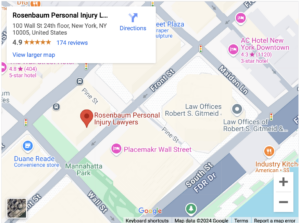Birth Injuries: Determining When Medical Malpractice Applies
Many families await the birth of a new child by excitedly preparing for its arrival. Some do this by researching the right hospital and obstetrician to provide care during the pregnancy and birth by asking friends and health care providers for recommendations and using online searches. However, even with the most diligent preparation in choosing a quality provider, medical mistakes during your pregnancy and birth process can happen. Unfortunately, these mistakes can sometimes lead to birth injuries.
In fact, medical professionals who choose to practice in this field are among those most frequently sued for medical negligence. A 2009 survey of members of the American College of Obstetricians and Gynecologists found that 90 percent of practicing obstetrician-gynecologists had faced lawsuits during their careers.
Bringing a child into this world remains a dangerous practice, and patients rightly expect their physician to be competent and attentive during the pregnancy and birth process. Although some birth injuries are unavoidable, others are the result of improper care from medical professionals. In addition to pain and suffering, these injuries can result in costly medical bills that often follow the child throughout his or her life.
Common Birth Injuries
Two particularly devastating birth injuries that are known to result in debilitating symptoms are cerebral palsy and shoulder dystocia.
Experts at Mayo Clinic state that a lack of oxygen to the brain during a difficult delivery can lead to the development of cerebral palsy. This neurological impairment can result in seizures, intellectual disabilities or mental retardation, and various muscular problems. Cerebral palsy is a condition that will remain with the child throughout his or her life, but various treatments are available to help minimize the disease’s impact on the child’s functional abilities.
A second common injury, shoulder dystocia, can also result from a difficult delivery. According the New York University Hospital, shoulder dystocia occurs when an infant’s head and shoulders cannot pass through the birth canal. Complications can result in this situation that put both the infant and mother at risk.
The infant can suffer from a lack of oxygen, broken collarbone, nerve damage to the arm and potential paralysis. The mother can also suffer tearing and hemorrhaging. Although potential for complication may not be known until delivery, there are various factors that aid doctors in predicting its likelihood. For example, if the mother is fairly small or if the baby is particularly large, the risk of this complication increases. In addition, an ultrasound can help a physician determine whether the baby will fit through the birth canal.
If the complication is not observed until delivery, various treatment options can reduce the risk of injury to the baby. These include a wide range of maneuvers that remove the baby from the birth canal before a loss of oxygen occurs, including use of forceps or vacuum assisted delivery. The use of a cesarean delivery, more commonly referred to as a C-section, can also greatly reduce the risk of these complications.
In some cases, shoulder dystocia and cerebral palsy can be avoided, or complications connected to the injuries reduced, if the physician is properly attentive during the delivery process.
Determining When Liability Applies
If a physician is inattentive during delivery and does not respond appropriately to signs that the child or mother is in distress, the doctor may be held liable for any resulting injuries.
These professionals are held to a high standard of care. Physicians are expected to perform in a manner consistent with their training and experience. In order to determine if a doctor preformed in such a manner, the legal system often compares the physician’s actions to those that a “reasonably prudent” doctor would have taken in the same or a similar situation.
If the doctor’s actions are in line with standard protocol, liability may not apply. However, if the physician did not act according to these standards, a victim or loved ones may be able to hold the doctor accountable for the resulting harm.
In addition to holding the physician liable, the hospital itself may also be held responsible. Under the legal theory of vicarious liability, a hospital can be held liable for an employee’s actions if that employee was acting within the scope of his or her job.
In addition, a hospital can be found negligent for its employee’s actions if it did not make reasonable inquiries about a physician’s past before the doctor was hired. Hospitals have a duty to ensure their patients’ safety; they are expected to hire competent medical professionals. If a hospital does not verify that a physician attended medical school and completed residency training before practicing medicine within the facility for example, the hospital may be liable under the theory of negligence.
In many situations, it is important to consider both the delivering physician and hospital in malpractice cases. Managing the complications associated with these injuries is expensive, and compensation may be available to cover these bills as well as pain and suffering.
Determining not only when liability applies but who it applies to can be difficult. As a result, if you or a loved one is injured during infant delivery, it is wise to discuss your situation with an experienced personal injury attorney.



